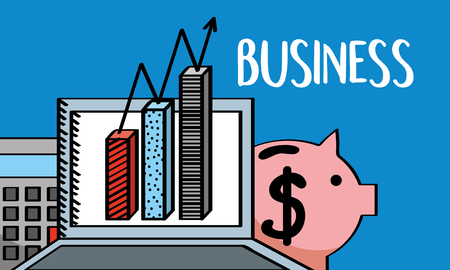Relying on Feedback from Friends and Family
One of the most common mistakes entrepreneurs make when validating business ideas is depending too much on feedback from friends and family. While it’s natural to want support from people who care about us, their encouragement often isn’t the best indicator of whether a business idea will succeed in the real market.
Why Is This a Problem?
Friends and family usually want to be supportive. They may avoid giving honest criticism because they don’t want to hurt your feelings or discourage you. As a result, their feedback tends to be overly positive, which can make you believe your idea is better than it really is.
Common Differences Between Friendly Feedback and Real Market Feedback
| Feedback Source | Typical Response | Potential Impact |
|---|---|---|
| Friends & Family | “That sounds great!” “You should totally go for it!” |
Makes you feel confident, but may not reflect actual market demand. |
| Potential Customers | “I would pay for this if…” “This doesn’t solve my problem.” |
Gives you real insights into whether your product fits a need. |
How to Avoid This Mistake
- Seek feedback from people who match your target customer profile, not just those close to you.
- Ask open-ended questions that encourage honest answers, like “What would stop you from using this?”
- Be ready for tough criticism—it’s better to hear it early than after launching your business.
- Use surveys or interviews with strangers or industry professionals to get unbiased opinions.
If you only listen to friends and family, you risk building a business based on encouragement rather than evidence. Make sure your validation process includes voices from outside your inner circle.
2. Skipping Market Research
One of the most common mistakes entrepreneurs make when validating their business ideas is skipping thorough market research. Many founders are eager to jump straight into building their product or service, but they underestimate how crucial it is to truly understand the landscape they’re entering. Without this step, it’s easy to misjudge who your target audience is, what competitors are already doing, and whether there’s real demand for your idea.
Why Market Research Matters
Market research helps you gather facts instead of relying on assumptions. It lets you see if people actually want what you’re offering and how your idea stacks up against others in the marketplace. This can save a lot of time and money down the road by preventing you from pursuing an idea that just isn’t viable.
Main Areas Entrepreneurs Overlook
| Area | What Entrepreneurs Often Miss |
|---|---|
| Target Audience | Assuming everyone will love their product without identifying specific customer segments or understanding their real needs. |
| Competitors | Not looking closely at direct and indirect competition, missing out on learning from their strengths and weaknesses. |
| Market Demand | Relying on gut feelings instead of actual data like surveys, interviews, or trend analysis. |
Simple Steps to Effective Market Research
- Talk to potential customers: Reach out directly through interviews or online surveys.
- Study your competitors: Analyze what similar businesses are doing and how customers respond to them.
- Look for trends: Use tools like Google Trends or industry reports to check if demand is growing or shrinking.
- Test with a small launch: Try a basic version of your idea with a limited audience before going big.
Avoiding this step might feel like you’re saving time, but skipping market research can lead to bigger headaches later. Taking the time to really get to know your market gives your business idea a much better chance of success.

3. Falling in Love with the Idea
One of the biggest mistakes entrepreneurs make when validating business ideas is getting emotionally attached to their idea. When you fall in love with your concept, it’s easy to overlook potential problems or ignore feedback that doesn’t fit your vision. This emotional bias can cloud your judgment and stop you from making necessary changes or even pivoting your business model.
Why Emotional Attachment Happens
Entrepreneurs are naturally passionate about their ideas. That passion fuels hard work and creativity, but it can also make it tough to take a step back and look at things objectively. You might invest so much time and energy into your idea that you start to see only its positives, missing the warning signs that something isn’t quite right.
Common Signs of Emotional Attachment
| Sign | Description |
|---|---|
| Ignoring Negative Feedback | Dismissing criticism or negative comments from potential customers or mentors. |
| Avoiding Customer Validation | Focusing on building the product instead of talking to real users. |
| Overlooking Competition | Believing your idea is unique without checking if others have tried similar things. |
| Refusing to Pivot | Sticking with the original idea despite evidence suggesting a change is needed. |
How to Stay Objective When Validating Your Idea
- Seek Honest Feedback: Regularly ask for input from people outside your immediate circle, like potential customers or industry experts.
- Test Assumptions: Use surveys, interviews, or prototypes to challenge your beliefs about the market and customer needs.
- Document Evidence: Keep track of both positive and negative results during validation so you can review them later with a clear mind.
- Be Willing to Pivot: If the data shows your idea needs adjustment, don’t be afraid to make changes or even start over.
Staying open-minded and being willing to let go of your original vision if necessary can help you avoid this common pitfall and increase your chances of building a successful business.
4. Misinterpreting Early Signs of Interest
One of the most common mistakes entrepreneurs make when validating a business idea is misreading early signals from potential customers. It’s easy to get excited when you see people signing up for your email list, liking your social media posts, or giving you positive feedback. However, these reactions don’t always mean people are ready to open their wallets and buy what you’re offering.
Why Early Interest Doesn’t Always Equal Sales
Just because someone clicks “like” or gives you their email doesn’t mean they’ll actually pay for your product or service. Many founders fall into the trap of assuming that positive engagement equals buying intent. In reality, there’s often a big gap between showing interest and making a purchase.
Common Signs vs. Real Buying Intent
| Early Sign of Interest | What It Actually Means | True Buying Signal |
|---|---|---|
| Email sign-up | Curiosity or mild interest | Making a pre-order or paying a deposit |
| Social media like/share | Supportive gesture, not commitment | Requesting a demo or asking about pricing |
| Positive survey feedback | Approval of idea, not necessarily intent to buy | Giving payment information or signing a contract |
The Risks of Misinterpretation
If you rely too much on soft signals like likes and sign-ups, you might overestimate your market demand. This can lead to investing time and money into building something that people are not actually willing to pay for.
How to Avoid This Mistake:
- Ask potential customers directly if they would pay for your solution—and how much.
- Test willingness to pay with real offers, such as pre-orders or deposits.
- Focus on actions that require some level of commitment beyond just interest.
- Avoid making major business decisions based solely on social engagement metrics.
Remember, seeing positive reactions feels good, but only real transactions prove true customer demand.
5. Underestimating the Value of a Minimum Viable Product (MVP)
One of the most common mistakes entrepreneurs make when validating business ideas is skipping the MVP stage and jumping straight into building a full-scale product. In the U.S. startup scene, there’s a strong emphasis on “moving fast and breaking things,” but that doesn’t mean building everything at once. Launching an MVP—a basic version of your product with just enough features to solve the core problem—lets you test your idea in the real world without burning through your budget or wasting months on development.
Why Entrepreneurs Skip the MVP
- Overconfidence in Their Idea: Many founders believe their solution is already perfect, so they go all-in from day one.
- Fear of Looking Unprofessional: Some worry that launching a basic version will hurt their reputation if it’s not polished.
- Lack of Understanding: Not everyone realizes how valuable early feedback can be for shaping a successful business.
The Cost of Skipping the MVP
If you skip the MVP and build out a complete solution first, you might end up spending months—or even years—creating something customers don’t actually want. Here’s a quick comparison:
| MVP Approach | Full Solution First | |
|---|---|---|
| Time to Market | Weeks or a few months | 6-18 months or more |
| Money Spent Upfront | Low to moderate | High |
| User Feedback Early? | Yes | No |
| Pivots Possible? | Easy and affordable | Difficult and expensive |
Real-World Example: Dropbox MVP
A classic example from Silicon Valley is Dropbox. Before building their full platform, they created a simple video demo showing how Dropbox would work. This video attracted thousands of signups and gave them proof that people wanted their product, all before writing most of the code.
Tips for Building an Effective MVP
- Solve One Main Problem: Focus on your product’s core feature—the thing that matters most to your target users.
- Keep It Simple: Don’t get distracted by extra features. Your MVP should be easy to build and launch quickly.
- Get Real Feedback: Put your MVP in front of real users as soon as possible and listen to what they say.
- Be Ready to Pivot: Use what you learn to improve your idea or change direction if needed.
Remember, an MVP isn’t about launching something half-baked; it’s about learning what works before making big investments. By testing your business idea with a minimum viable product, you’ll save time, money, and headaches—and set yourself up for real market fit in the long run.


